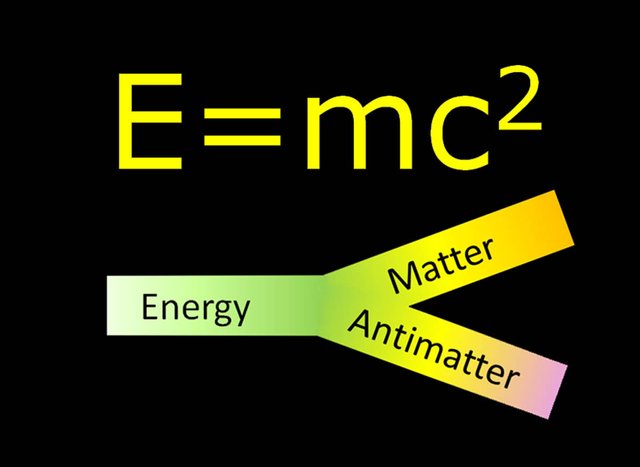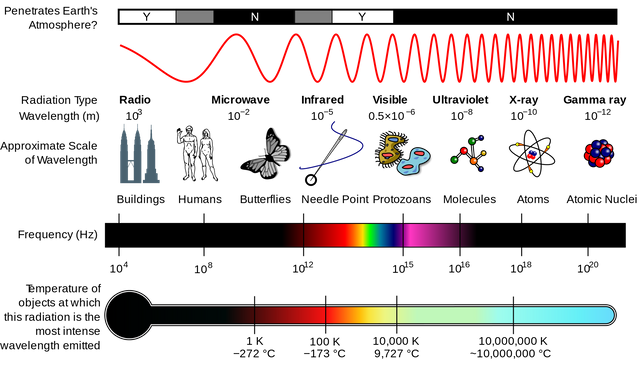Matter Anti-Matter Creation and Annihilation
Pair production is a natural phenomena that most often refers to the event when a significantly high energy photon interacts with a nucleus, and creates an electron anti-electron pair through a process termed creation. When the particle and anti-particle interact, they annihilate each other producing energy with 100% efficiency.

(Source)
[Note: This is for the EM framework.]
How it Works
Pair production with a photon happens when a high energy photon approaches an atomic nuclei. The energy of the photon is instantly turned into a particle/anti-particle pair and the nucleus it interacted with moves due to the conservation of momentum, however in most cases this movement is negligible. For the particle/anti-particle pair to even exist, the energy of the photon must be greater than or equal to the energy required to produce the pair. The energy is the sum of the mass energy + the kinetic energy. When a particle is not moving, the energy that it has is called rest energy and is simply its mass converted to energy. The rest energy for an electron/anti-electron pair is 1.022MeV (Mega-electron-Volts).
The chances of pair production occurring is linked to how much energy the photon has and the atomic number of the interacting nucleus. The more energy the photon has, the greater the probability of pair production, this probability is also proportional to the square of the atomic number of the atom.
Electron V.S. Positron
Electrons and positrons are basically the same thing, same mass, same spin except for one detail. The electron has a negative charge while the positron has a positive charge. It is important to not get a positron mixed up with a proton which also has a positive charge too but is much different.
The Basics:
The energy of the photon is convertible to an electron and a positron (anti-electron) shown with:
γ → e- + e+
This works because the energy of the photon needed to make the pair is exactly 2 times the mass of an electron (because electrons and positrons have the same mass). Using E2 = p2 c2 + m2 c4 it can be found that the energy of the photon is 2 times the mass energy of the electron plus the kinetic energy.
What Does this Mean?
What this means is that the energy of the photon must be equal to the rest energies of the electron positron pair. This raises the question about what type of photon is needed to produce the pair. It can be found using E = hf. Which says that the energy of the photon is equal to the frequency(f) times Plank's constant (h = 6.62607004 × 10-34 (m2 x kg) / s). Then by setting the energy combined rest masses of the electron positron pair, the wavelength can be solved for. It is found that the photon has enough energy to be called a gamma ray.

(Source)
Photon Mass and Momentum
Issac Newton described the momentum of a particle, p, in a way that made p act simply when the particle is accelerated or during collisions. He said that the behavior to be true, p must be proportional to the velocity v. The relationship is shown with p = mv. With this we can also find the energy of the photon and electron. The general equation that can be used to find energy is:
E2 = p2 c2 + m2 c4
It can also be used to find momentum and mass when needed by rearranging it.
Conservation of Energy:
The energy of the photon before the collision has to have the energy equal to the combined rest energies of the electron positron pair.
E0 = Ef
hf = E(KE electron) + E(electron) + E(KE positron) + E(positron)
hf = [mc2 x γ(v1) - mc2] + m2 + [mc2 γ(v2) - mc2] + mc2
[Note: mc2 x γ(v1) - mc2 is used to find the relativistic kinetic energy
simplified to:
hf = mc2 [γ(v1) + γ(v2)]
Conservation of Momentum:
Because the velocity of the photon is a vector and is only travelling in the X direction, the y component of the momentum is 0.
For x though momentum is conserved and can be used to find the angle by doing the following:
p1 = p2
hv/c = p(electron) x cos(α) + p(positron) x cos(β)
hv/c = mv1γ(v1)cos(α) + mv2γ(v2)cos(β)
hv = mc[γ(v1)v1 cos(α) + γ(v2)v2 cos(β)]
Where v1cos(α or β) ≠ c
With α and β being the angle that the electron and positron take.
How can it be detected
Pair annihilation can be detected in the same way that particle accelerators work. In a particle accelerator, particles are accelerated to enormous speeds and then smashed into each other. The aftermath of the collision is detected, analyzed and recorded. The same thing can be done with particle annihilation. This method has been applied to many things and has revolutionized physics as a whole.
Sources:
lemouth
justtryme90
www.fnal.gov/pub/today/images/images12/NS120907_Figure01.jpg
upload.wikimedia.org/wikipedia/commons/thumb/c/cf/EM_Spectrum_Properties_edit.svg/2000px-EM_Spectrum_Properties_edit.svg.png
physics.stackexchange.com/questions/50106/pair-production-mathematically
math.ucr.edu/home/baez/physics/ParticleAndNuclear/photon_mass.html
www.britannica.com/science/pair-production
ryuc.info/creativityphysics/energy/pair_production.htm
s3.postimg.org/mkt3dd4ub/pair_production_picture.jpg
math.ucr.edu/home/baez/physics/ParticleAndNuclear/photon_mass.html
Very good post :)
хм... интересная информация !